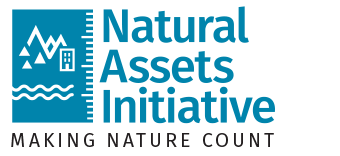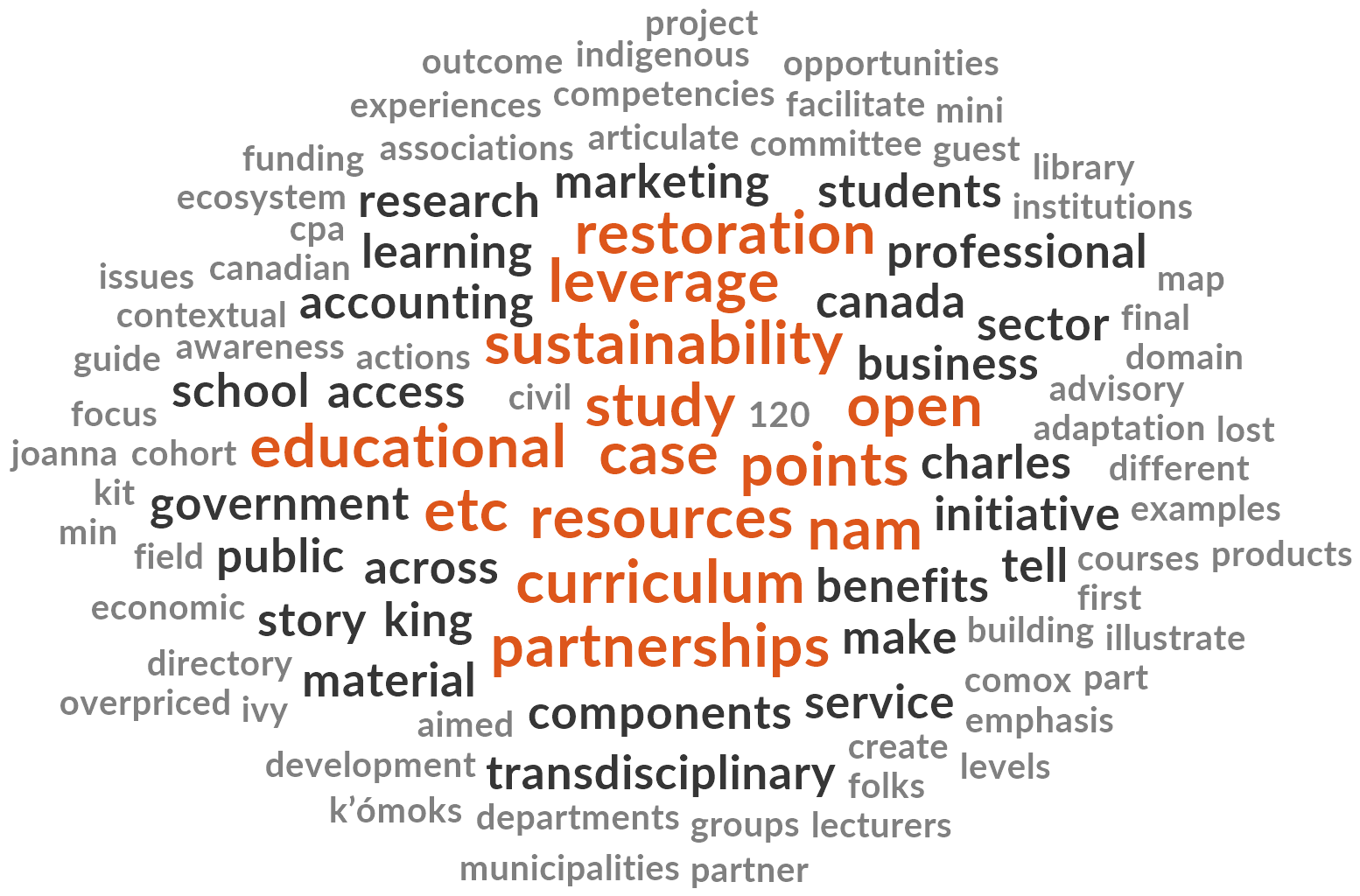Linking nature and infrastructure – a challenging dialogue
Every day, local governments rely on advice from engineers, planners, landscape architects, accountants, specialized asset managers and others to manage infrastructure. But as global focus shifts to climate change adaptation and mitigation practices, how do these professionals learn about the links between nature-based solutions (NbS) and infrastructure to support natural infrastructure (NI)? This has only become more important as local governments and communities really see the role that healthy natural systems play in providing critical infrastructure for Canadians (pdf).
To explore this topic, the Adaptation Learning Network and the Resilience By Design lab led by Professor Robin Cox at Royal Roads University, worked with the Natural Assets Initiative (NAI) to develop recommendations to increase awareness and understanding of natural assets management (NAM) and NI. Through a structured NAM Challenge Dialogue process and expert guidance, they challenged educators and professionals familiar with the skills needed to develop NI and NAM, to consider what they think will work best.
The NAM Challenge Dialogue workshop was structured around three capacity-building focal areas: Starting Points, Leverage Points and Partnership Opportunities. Participants were challenged to respond to options for action through academic programming, training, and certifications. So, what’s the verdict? The following recommendations are based on themes identified by participants as a practical path to increase understanding and implementation of NI.
Share case studies
Recommendation
The most common recommendation was to show how NAM is already working through case studies reflecting real-world, practical examples. Cases are needed to address all phases of NI projects as collaborations across the ongoing life of natural assets, with open access learning materials supporting regulated credentials.
Participants said …
- Case studies are critical in formal education and elsewhere.
- Identify gaps in knowledge to meet some types of demand (e.g. good practices are just evolving).
- We need case studies illustrating co-benefits across value systems, emphasising economic benefits.
Educators highlighted the need for curriculum resources, especially through case studies with a sustainability focus.
Increase demand
Recommendation
If legislation or regulation is not introduced to require a shift to greener infrastructure, there remains a need for substantial government funding linked directly to NI and the education that can build capacity to meet an increasing demand.
Participants said …
- Regulate so that professionals have to respond [such as Ontario’s model of asset management].
- Present business case and rationale for acquiring this knowledge.
- It can’t be ignored, need to get that integration in place, continue with messaging.
Network knowledge
Recommendation
Develop and make freely accessible tools and templates to share common understandings of NAM. By centralizing many different open resources, existing and future research and solutions can support knowledge transfer throughout networks and across existing professional and cultural boundaries.
Participants said …
- Establish and advertise platforms for data sharing.
- Bring existing resource collections together (e.g., Green Infrastructure ON), make them accessible to different communities.
- Gaps may not be so large. Info is there, collaboration across disciplines is missing.
Standardize guidance
Recommendation
Develop and share good-practice guidance at introductory and intermediate levels that span silos and reinforce collaboration. Standardized guidance can be useful to multiple professions, from basic principles to more specialized professional skills and competencies.
Participants said …
- Leverage development of CSA standards for knowledge sharing and opportunities.
- Create online resource including case studies, directory of guest lecturers and other resources.
- NAM needs to be integrated into other training related to AM, resilience … Don’t silo this!
Build on relationships
Recommendation
A keen awareness of the interconnectedness of all things is central to NAM. Strengthen existing relationships and partnerships with professions, skilled workers, and administrators to support NAM across a wide range of roles in education, community, and employment.
Participants said …
- What are ways to partner with different levels of government?
- Transdisciplinary Research (Partnerships across sectors).
- Partner with public works associations & particularly operators – gap.
Looking ahead
These recommendations can inform systemic change in understanding and developing natural infrastructure. As an ongoing process, this involves many players who identify and act on new starting and leverage points and who initiate and nurture partnerships, and the opportunities they provide. For its part, NAI has started to build on the insights from the Challenge Dialogue in partnership with the International Institute for Sustainable Development (IISD). Through this partnership, NAI and IISD co-develop with established professional groups in the Prairies, action plans and interventions including formal education, informal education and work experience for NI and NAM.
Thank you to all the people who took the time to consider and respond to this Challenge Dialogue that the Ethelo Platform hosted online from February 15 to March 31, 2022. Thanks to all who participated in the virtual workshop hosted by the Resilience By Design Lab at Royal Roads University on September 23, 2022 that clarified understandings and planned strategic actions. Thanks to Keith Jones of the Challenge Dialogue System® for guidance throughout the project. These insights and comments responding to the challenging statements explore key issues that affect NAM capacities and practices in Canada.
The Challenge Dialogue was led by Dr Liese Coulter who works with NAI and the Resilience by Design lab to better understand professional norms and educational competencies to support natural asset practices.


